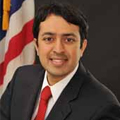Every 15 seconds—roughly the time it’ll take you to read this sentence—an older adult falls and suffers serious injuries. This simply shouldn’t happen. Some age-related changes—for example, in your vision, balance, and flexibility—increase risks of falling, but there’s a great deal you can do to prevent falls in later life.
The AGS Foundation for Health in Aging is committed to helping prevent falls. We have created a series of five new, easy-to-follow videos illustrating how older adults can avoid falls. I encourage you to take a look and to share these videos with others.
The Foundation’s new falls prevention videos cover:
What you can do to avoid falls at home—simple things you can do to prevent falls, such as making sure all your rugs are firmly fastened to the floor or have nonskid backing; and installing night-lights in your bedroom, hallways, and bathroom.
Falls assessment—a quick, simple, and reliable test your healthcare provider can use to determine whether you’re at increased risk of falling.
How your healthcare professional can help lower your risk—things your healthcare provider can do to help you lower your odds of falling, such as : identifying whether any of your medications or supplements might increase your risk of a fall and finding safer alternatives; and checking your balance, vision, leg strength, blood pressure, and the way you walk, and recommending exercises and lifestyle changes to make you surer on your feet.
How to choose and use a cane—expert advice for choosing the right cane, in the right size, and using it appropriately.
How to choose an use a walker—an explanation of the different types of walkers, and advice for finding and using the right one.
The expert content for all five videos comes from Healthinaging.org, which includes a wealth of additional information, tips, and tools to help older adults prevent falls. Just type “falls” in the search box above, and start lowering your risk today.

